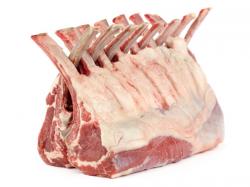Beef Price Ups And Downs
September 9, 2016 | 3 min to read

The cattle market zig-zags up and down more than ever, but so do prices for the end product, says a boxed beef reporter for Urner Barry, in Toms River, N.J.
“Ranchers understand not only what it takes to raise an animal, the science of it, but also for what market and when,” says Bruce Longo. “The same happens in the beef market.”
Seasonality is basic to both sectors, but with differing influences.
Summer grilling season brings increased demand for steaks from the rib and loin cuts, so their prices rise. In the winter, roast beef demand supports prices for the chuck and round. The start of 2016 provides an example.
“Chuck spiked upward in January through mid February, fell off beginning in March and into the summer because it’s not in demand,” Longo explains.
A specific beef product price can spike or plunge more rapidly than live cattle because of market structure, but there are similarities.
“We have ‘formula’ business and ‘negotiated’ business,” he says.
Formula pricing plugs in values from a market report such as Urner Barry or USDA to compute an average price, while negotiated business means adjusting a price until packer and beef buyer agree. Terms can be set for virtually any period of time.
“We can book formula business for today in what is called the ‘spot’ market, or longer such as a month, six months or a year-long contract,” Longo says.
If it all sounds predictable or steady, consider what can happen without warning.
In late spring last year, a large retailer decided to feature sirloin flaps as “fajita” meat and marinated steaks for Cinco de Mayo, all at a low price before the seasonally higher summer trend began. Available supply dropped because much of what remained was already contracted. That caused prices to spike upward as other retailers scrambled to cover their needs.
This year on the other hand, demand for the more traditional flank steaks used in fajitas faltered for lack of demand (see line graph).
“Most of the grilling activities across the country stalled a little because of cooler weather early on,” Longo says. “If you don’t get that grilling activity going, you just don’t have as much demand.”
As prices fluctuate, beef retailers decide what they can afford to keep in their stores and feature in weekly ad flyers.
David O’Diam, executive account manager for the Certified Angus Beef ® (CAB®) brand, says his team helps retail partners sort out the best options.
“We may focus on lower priced cuts,” he says. “Rather than go to a strip steak with less marbling, we might suggest they try a CAB top sirloin or London broil.”
The steady brand presence keeps it relevant to consumers and retailers.
“At lower prices, more retailers become interested in carrying the brand, and packers are looking for new customers,” O’Diam says. “Bringing them together, we create more demand, increasing demand for Angus cattle that can meet our quality specifications.”
With a higher supply of cattle and beef coming on, the expansion phase brings lower prices.
“It’s tough to look at the bank account and say that’s a good thing if you’re a rancher,” O’Diam says. “But we’re building demand for the beef, and that is a good thing.”
Source: Certified Angus Beef Brand
